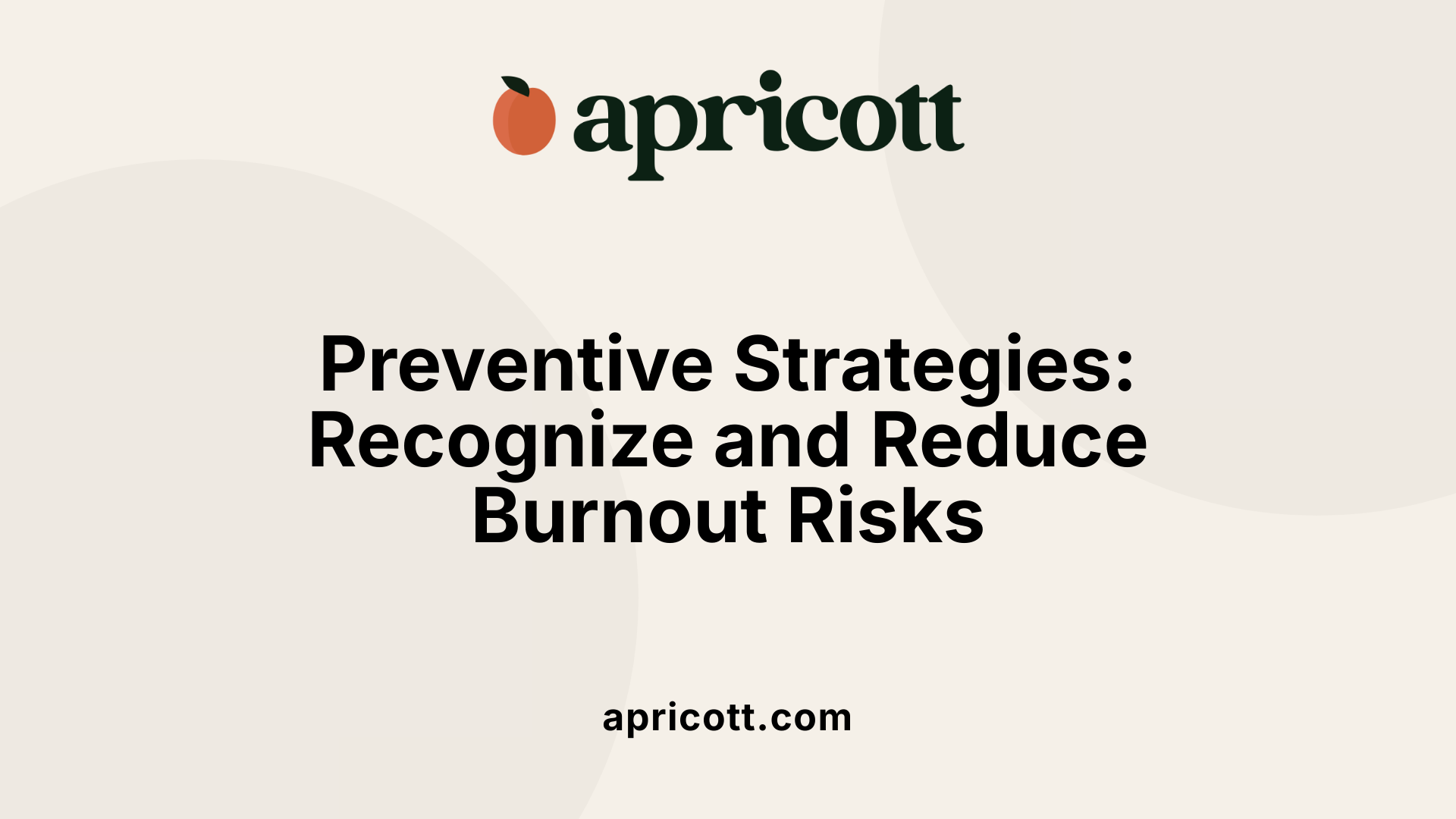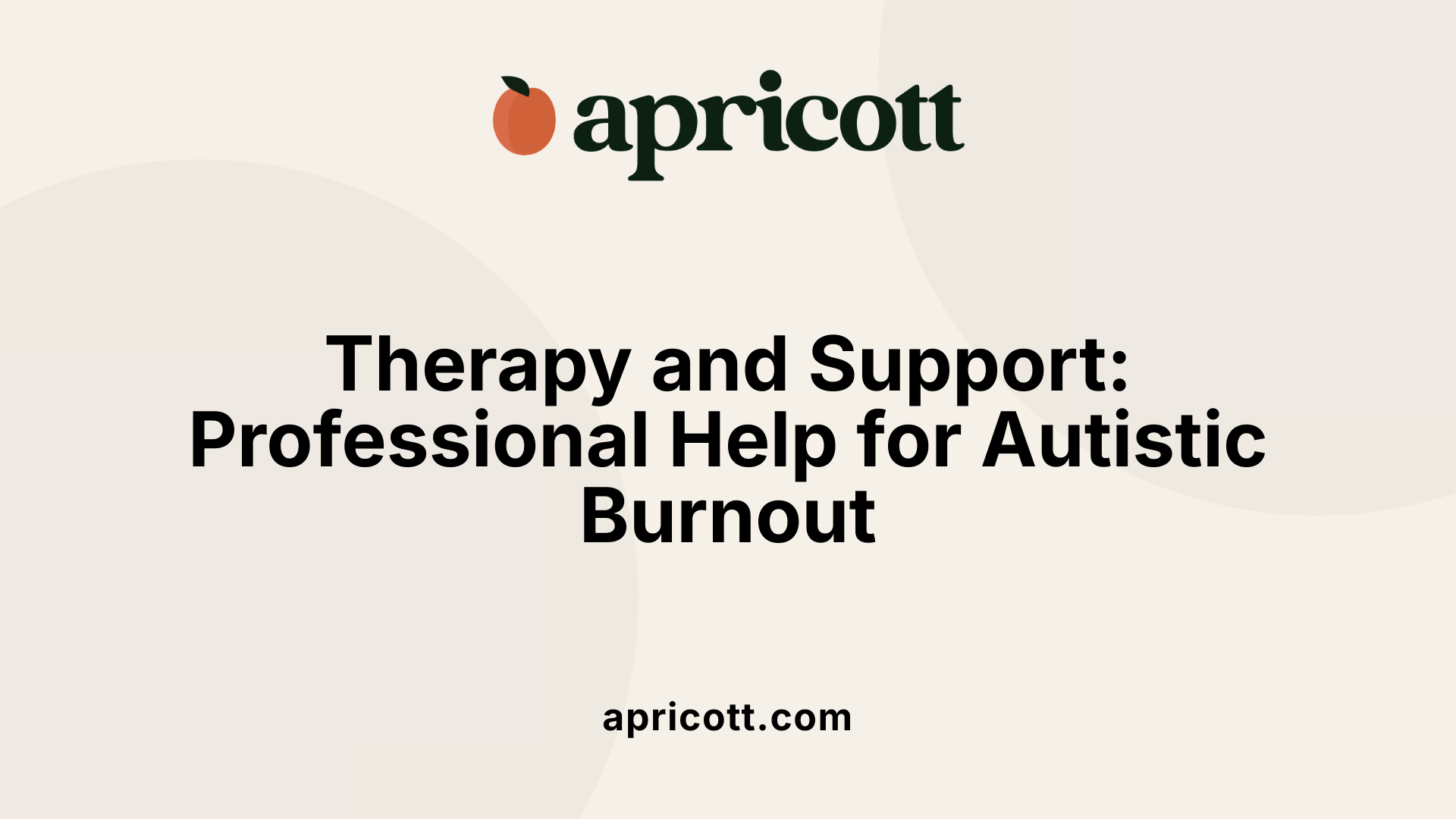December 2, 2025
Understanding the Hidden Struggle: A Deep Dive into Autistic Burnout
Autistic burnout is a term gaining recognition for describing a unique and profound syndrome experienced exclusively by autistic individuals. Unlike common burnout or clinical depression, it involves a deep, chronic exhaustion that affects every aspect of life and is rooted in the persistent mismatch between expectations and abilities without sufficient support. This article explores the nature, causes, symptoms, impacts, and interventions related to autistic burnout to raise awareness and improve understanding of this significant condition.

Autistic burnout is a syndrome unique to autistic individuals, marked by prolonged and intense physical and mental exhaustion. It results from chronic stress and a mismatch between one's abilities and external expectations without sufficient support. This condition leads to a significant loss of skills and decreased tolerance to sensory inputs.
Though autistic burnout shares some symptoms with occupational burnout and clinical depression, such as exhaustion and mood disturbances, it is a distinct phenomenon. Unlike these, autistic burnout stems specifically from the ongoing challenges of navigating a neurotypical world with inadequate accommodations and support.
Individuals experiencing autistic burnout commonly face a variety of symptoms including persistent fatigue, increased sensory sensitivity, difficulties with executive functioning and emotional regulation, withdrawal from social engagement, and a decline in daily living skills. These symptoms affect all areas of life and contribute to a deep sense of overwhelm and regression.
Autistic burnout typically lasts for extended periods, often exceeding three months. The duration can vary widely based on the severity of the stressors involved and the availability of support systems. Recovery is usually gradual and involves comprehensive changes to reduce stress and improve accommodations.

Autistic burnout manifests through a range of physical, emotional, cognitive, and behavioral symptoms that deeply affect an individual's daily functioning.
Commonly reported physical symptoms include chronic fatigue, notable changes in sleep patterns, increased physical pain, and heightened sensory sensitivities. These sensory changes might involve greater intolerance to noise, light, or touch, making environments overwhelming.
Emotionally, individuals often experience increased anxiety and difficulty regulating emotions, resulting in heightened stress levels. Cognitively, autistic burnout can cause slowed thinking, impaired decision-making, and executive dysfunction, which affect planning, organizing, and completing tasks.
Behaviorally, those experiencing burnout may withdraw socially, present disorganized behavior, exhibit slower speech, and lose interest in special interests that previously provided comfort and joy.
While autistic burnout can resemble depression, several distinguishing features exist. Unlike typical depression, burnout includes intensified sensory sensitivities and specific challenges with executive functioning. These differences highlight the need for tailored approaches to support and intervention rather than assuming it is solely a depressive condition.
Understanding these symptoms is crucial for recognizing autistic burnout early and implementing effective management strategies to support individuals through recovery and prevention.

Autistic burnout results from a complex mix of factors that place ongoing stress on autistic individuals. At the heart of it is the prolonged effort to meet demands that exceed a person's abilities, often without adequate support.
Many autistic people mask or hide their natural traits to fit in with neurotypical expectations. This continuous effort to suppress authentic behaviors can lead to emotional disconnection and exhaustion, significantly contributing to burnout.
Society often holds unrealistic expectations for autistic individuals, demanding them to perform and behave in ways that may not align with their natural capacities. This pressure builds up a cumulative stress load which becomes overwhelming.
Stressful environments such as noisy or crowded places heighten sensory overload. Additionally, major life changes like puberty, graduation, or moving from school to work impose high demands, exacerbating stress levels and triggering burnout.
Obstacles such as gaslighting, poor personal boundaries, and insufficient external support prevent many autistic individuals from getting the help they need. Lack of accommodations and validation further intensify feelings of isolation and exhaustion.
Understanding these causes helps in recognizing the origins of autistic burnout and underlines the importance of tailored support systems and acceptance to prevent and manage it effectively.

Autistic burnout severely affects an individual's ability to manage daily life and maintain mental well-being. One major impact is a diminished capacity for independent living. Autistic adults often experience long-term exhaustion and loss of executive functioning skills, such as planning, decision-making, and completing everyday tasks. This reduced functional ability can lead to increased reliance on others for support.
Loss of skills during burnout episodes is common, with individuals reporting challenges in speech, emotional regulation, and sensory processing. These difficulties can feel like a regression in capabilities, contributing to fears about permanent skill loss and decreased self-belief.
Mental health challenges frequently accompany autistic burnout. Anxiety, heightened stress, depression, and emotional dysregulation are typical. The burnout can exacerbate these conditions, sometimes leading to serious health risks including increased suicidal behavior. Sensory overload and exhaustion also play a role in intensifying psychological strain.
Overall quality of life tends to decline during periods of burnout. Autistic individuals describe burnout as causing withdrawal from social activities, reduced engagement with interests, and a lowered mood, all of which diminish life satisfaction and well-being.
Addressing these impacts requires recognizing autistic burnout as a distinct condition and implementing supportive measures that reduce stress, validate experiences, and improve coping mechanisms.

Spotting the onset of autistic burnout is crucial for prevention. Early signs often include increased fatigue, heightened sensory sensitivities, and difficulties managing daily tasks. Emotional symptoms like anxiety and withdrawal from social activities may also emerge. Awareness of these warning signs enables timely intervention before symptoms escalate.
Managing and reducing the cumulative stress that autistic individuals face is fundamental. This can be done through self-care routines, setting clear personal boundaries, and prioritizing rest. Avoiding overwhelming environments and minimizing the need for masking autistic traits helps lower stress. Taking breaks from social demands and sensory overload further supports recovery and prevention.
Support from family, friends, and professionals makes a significant difference in preventing burnout. Environments that accept and validate autistic experiences foster feelings of safety and confidence. Providing reasonable accommodations and adjustments in educational or work settings reduces pressure. Encouraging open communication helps identify needs and prevents exhaustion.
Affirming neurodiversity allows autistic individuals to embrace their identities authentically. This validation reduces the necessity of masking and promotes self-advocacy. Celebrating autistic strengths and cultivating inclusive communities encourage acceptance and reduce stigma, which in turn lowers the risk of burnout.
Prevention involves recognizing early signs such as increasing fatigue or sensory overload, reducing cumulative stress through self-care and setting healthy boundaries, fostering acceptance and support from others, creating neurodiversity-affirming environments, and reducing the need to mask autistic traits. Structured routines and manageable workloads also contribute to lowering the risk.

Managing autistic burnout starts with reducing immediate demands and sensory overload. Individuals benefit from prioritizing physical self-care, such as adequate rest and nutrition, and engaging in soothing activities, including special interests that bring comfort and joy. Creating calm and sensory-friendly environments helps minimize stress and allows the nervous system to recover from overload.
Sustained recovery requires a multi-faceted approach. Seeking professional support, such as occupational therapy, can provide tailored coping strategies and sensory integration techniques. Developing routines that accommodate sensory and executive functioning needs also aids recovery. Over time, gradual reduction of stressors and pacing activities prevent re-experiencing burnout symptoms.
Embracing one’s authentic autistic identity by reducing masking is crucial for recovery. This involves setting firm personal boundaries and communicating needs effectively to reduce cognitive and emotional overload. Self-advocacy empowers individuals to request reasonable accommodations at work or school, and to cultivate supportive social networks that understand and respect autistic experiences.
Professional help plays a significant role in recovery. Mental health specialists familiar with autism can guide behavioral and emotional management strategies tailored to autistic burnout. Therapists, occupational therapists, and speech-language pathologists offer interventions that improve communication, sensory comfort, and daily functioning. Well-informed professionals also help validate experiences and reduce stigma, enabling better long-term outcomes.
By combining immediate relief tactics with long-term supportive measures, autistic individuals can navigate burnout more effectively and foster resilient, sustainable well-being.

Therapy and professional support play a significant role in managing and recovering from autistic burnout. Occupational therapy and speech-language pathology are two common interventions that address the physical, cognitive, and social challenges autistic individuals face during burnout.
Occupational therapists help develop personalized coping strategies to reduce sensory overload and build daily routines that ease the burden of executive dysfunction. These therapists also focus on sensory integration techniques to manage heightened sensitivities common in burnout. Speech-language pathologists support communication needs by enhancing social communication skills tailored to the individual's unique pattern, which can be especially affected during burnout episodes.
Supporting routines that incorporate stimming behaviors and self-care activities helps maintain emotional regulation and reduce stress. Therapeutic approaches are customized to each individual's abilities and challenges, allowing for flexible adjustments as recovery progresses.
Clinician recognition and validation of autistic burnout experiences are essential. When healthcare providers acknowledge the distinct nature of burnout, they can offer more targeted support and reduce stigma associated with this debilitating state. This acceptance encourages autistic individuals to seek help and advocate for accommodations, further facilitating long-term recovery.
In summary, therapy provides crucial tools and emotional support to navigate autistic burnout through tailored interventions, while professional recognition validates the experience and promotes effective strategies for relief and prevention.

Addressing autistic burnout effectively goes beyond individual care and necessitates broad societal changes. A critical first step is increasing public and professional awareness about the unique nature of autistic burnout, which is often misunderstood or conflated with depression or occupational burnout. Validation of autistic experiences is crucial, as many individuals face emotional invalidation and gaslighting that exacerbate burnout symptoms.
Stigma and discrimination remain significant barriers. Reducing these through education and advocacy can create safer, more accepting environments where autistic people do not feel pressured to mask their traits. This shift is vital for preventing the cumulative stress that leads to burnout.
Equally important is improving access to accommodations and support systems. Many autistic individuals struggle to obtain necessary adjustments at work, school, or in healthcare due to misunderstanding of their needs or systemic obstacles. Society must push for better clinician recognition of burnout and tailored support interventions.
Lastly, fostering neurodiversity-affirming communities helps build resilience. Such spaces empower autistic individuals to embrace their authentic selves, practice self-advocacy, and reduce isolation. Collectively, these changes promote healthier, more autonomous lives, fundamentally transforming how society supports autistic people to prevent and relieve burnout.
Autistic burnout is a profound and multifaceted syndrome distinct from other forms of burnout and mental health conditions. Understanding its causes, manifestations, and impacts is vital for developing effective prevention and management strategies. By fostering awareness, acceptance, and tailored support from individuals, clinicians, and society at large, we can better address the challenges faced by autistic people experiencing burnout. Recognizing autistic burnout validates lived experiences and paves the way toward more compassionate care and neurodiversity-affirming practices, improving quality of life and empowering autistic individuals to thrive.